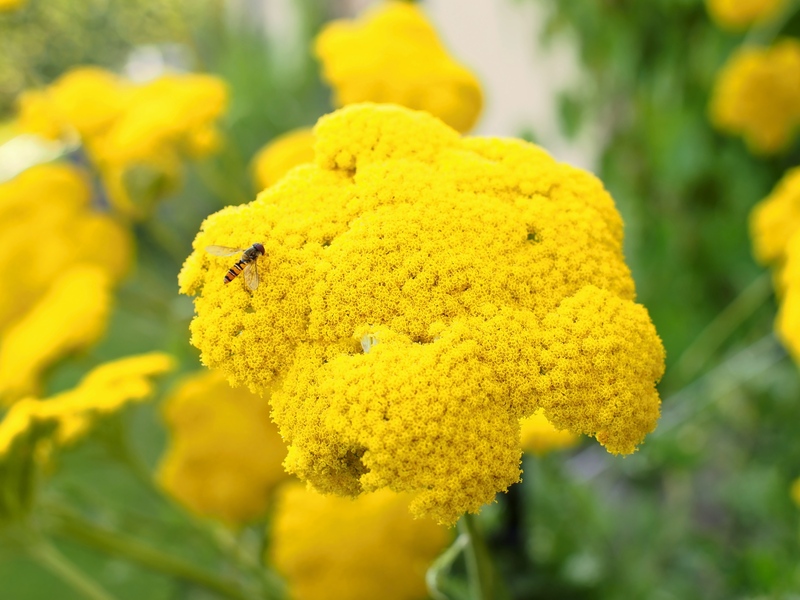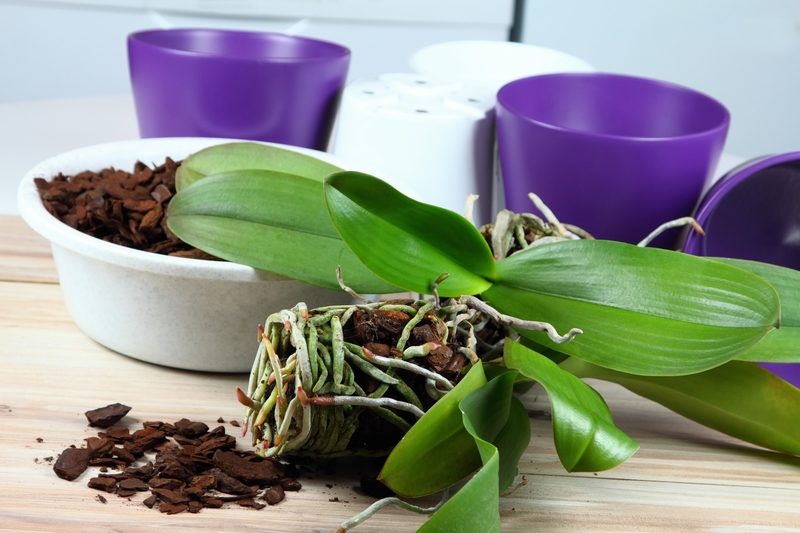Designing a Vibrant and Child-Centric Garden Space
Posted on 11/09/2025
Designing a Vibrant and Child-Centric Garden Space
Creating a child-centric garden space that's both vibrant and functional is an art that combines outdoor design, safety, and fun. Families everywhere are rediscovering the joys of spending time together outdoors. A thoughtfully designed children's garden space can nurture a love for nature, inspire creativity, and provide hours of entertainment for kids of all ages. In this in-depth article, we'll guide you through the process of designing a lively and kid-friendly garden, filled with exciting features, education opportunities, and lasting memories.
Why Create a Children's Garden Space?
A children's garden is much more than just an outdoor play area. It becomes a magical world where young imaginations run wild. Such a space encourages physical activity, fosters curiosity about plants and wildlife, and helps children learn valuable lessons in responsibility and sustainability.
- Physical Development: Activities like digging, climbing, and running improve strength and coordination.
- Mental Stimulation: Exposure to different plants, textures, and natural elements fuels creativity and learning.
- Emotional Well-being: Outdoor play reduces stress and supports emotional growth.
- Family Bonding: A family-friendly garden draws everyone together for gardening and play.

Key Considerations for Child-Focused Garden Design
Before you start digging and planting, take a step back and consider the essential factors that will help you design a truly child-focused outdoor space.
- Safety First: Ensure soft landings, visible boundaries, and non-toxic plants.
- Age Appropriateness: Adapt features for toddlers, children, and older kids.
- Accessibility: Create pathways and play features that are easy for all children to use.
- Eye-Catching Appeal: Incorporate vibrant colors, whimsical shapes, and interactive elements.
- Durability: Choose weather-resistant, kid-proof materials that last.
Planning Your Vibrant Kid-Friendly Garden
Understanding Your Space
Start by assessing your garden area. Observe the sunlight, shady spots, wind patterns, and existing plants or structures. Understanding your outdoor space will help you make the best design decisions.
- Sunlight: Plan sun-loving plants in open sections, and use shade for quiet corners or sandboxes.
- Terrain: Gentle slopes can become rolling play hills, while flat grounds are perfect for lawn games.
- Size: Compact yards can feature vertical gardens or raised beds, while large spaces offer room for more adventurous elements.
Setting Themed Zones
Organizing your child-centric garden into themed zones helps keep activities safe and encourages diverse types of play. Use flowers, paths, or low fences to separate each area.
- Active Play Zone: Swings, climbing frames, or large lawn areas.
- Nature Discovery Zone: Wildlife habitats, bug hotels, or bird feeders.
- Creative Corner: Art easels, mud kitchens, or sand pits.
- Calm Retreat: Teepees, cozy benches, or reading nooks surrounded by tall plants.
- Edible Garden: Kid-friendly raised beds with strawberries, cherry tomatoes, and herbs.
Choosing Child-Safe, Colorful Plants
Plant selection is pivotal in designing a child-friendly and vibrant garden space for kids. Opt for hardy, non-toxic, and sensory plants to ensure safety and excitement.
Top Child-Safe Plants for Family Gardens
Below are some excellent choices for a kid-centric garden:
- Sunflowers: Tall and bright, easy for little hands to grow.
- Marigolds: Hardy, colorful, and great for deterring pests.
- Sensory Grasses: Soft to the touch and soothing in the wind.
- Strawberries: Delicious, rewarding, and low-growing.
- Snapdragons: Fun to touch and come in vibrant hues.
- Basil and Mint: Edible and aromatic--perfect for sensory exploration.
- Lavender: Lovely scent and bee-friendly.
- Pansies: Edible blossoms and bold colors.
Tip: Consult lists of poisonous or irritating plants in your region, and avoid species that are unsafe for children or pets.
Essential Features for a Fun, Safe Kids' Garden
Including special features in your child-centric garden design transforms your space from ordinary to extraordinary.
Nature-Inspired Play Structures
- Treehouses & Hideouts: Offer spaces for secret adventures and imaginative play.
- Climbing Walls: Designed low for safety, perfect for honing motor skills.
- Boulder Paths: Natural rocks for hopping, balancing, and sitting.
- Willow Dens: Living structures that grow and change through the seasons.
Interactive Water Elements
Engage all the senses with water play features:
- Splash Pads: Safe, slip-resistant water play areas.
- Pebble Streams: Shallow channels kids can dam or divert.
- Mud Kitchens: Outdoor sinks and worktops for pretend cooking and experimenting.
Always supervise water play and incorporate drainage to prevent standing water and mosquitos.
Creative, Educational Corners
- Chalkboard Walls: Weatherproof boards for drawing and writing.
- Art Stations: Tables for painting with natural materials like flowers and leaves.
- Reading Nooks: Hammocks or beanbags tucked into leafy corners.
- Mini Greenhouses: Inspire an early love for growing and science.
Paths, Mazes, and Secret Trails
Kids crave adventure, even in the backyard! Consider:
- Stepping Stone Paths: Create winding routes through flowerbeds.
- Mini-Mazes: Use tall grasses, shrubs, or colorful fences.
- Secret Tunnels: Crawl-through arbors of climbing plants.
Encourage exploration and discovery with ever-changing paths and hideaways.
Maintaining Safety in Child-Focused Gardens
Safety is paramount in every kid-friendly garden space. Follow these guidelines for protection and peace of mind.
Garden Safety Checklist
- Use Soft Surfaces: Mulch, grass, or rubber mats under play equipment reduce injury risks.
- Smooth Edges: Avoid sharp corners on equipment and raised beds.
- Secure Fences & Gates: Set clear boundaries and visible limits.
- Child-Safe Tools: Provide lightweight, blunt gardening tools.
- Hidden Hazards: Store chemicals, sharp tools, and grills out of children's reach.
- Allergy Awareness: Note common garden allergens and avoid planting them.
Encouraging Sustainable Practices in Kids' Gardens
Building sustainability into your garden teaches children about environmental stewardship from an early age.
- Composting: Create a small compost bin and let children help recycle kitchen scraps.
- Rainwater Harvesting: Show how barrels can conserve water.
- Native Plants: Choose regional species that support pollinators and require less maintenance.
- Wildlife Habitats: Install birdhouses, insect hotels, or a frog pond.
- Seed Saving: Collect and store seeds together at summer's end for next year's planting.
Encouraging Child Participation in Garden Design
Include children in every step of the design and creation process to build their ownership and excitement. Not only does this nurture creativity, but it also makes your outdoor space truly their own!
- Choice of Plants: Let kids select colors, scents, and even edibles they want to grow.
- DIY Decorations: Painted stones, homemade wind chimes, or garden signs personalize the space.
- Name the Zones: Give each garden area a playful, creative name.
- Projects and Experiments: Try growing sunflowers as a competition or setting up nature scavenger hunts.
Design Inspiration: Garden Ideas for All Ages
Whether you're designing a toddler's wonderland or a backyard haven for tweens and teens, the possibilities are endless.
Toddler-Safe Outdoor Spaces
- Soft Lawns: Plenty of plush grass for crawling and early steps.
- Low Raised Beds: Easy access for little hands to dig and play.
- Sturdy Playhouses: Simple houses or tents for role-play and naps.
- Bubble Zones: Safe, open spaces for chasing bubbles and laughter.
Adventure Spaces for Older Kids
- Zip Lines and Rope Swings: For thrill and coordination.
- Teepees and Hideouts: Hang out with friends or read in solitude.
- Obstacle Paths: Create backyard "ninja" courses using logs, stepping stones, and tires.
- Vegetable Plots: Let older children manage their gardens for pride and skill-building.
Inclusive Gardens for All Abilities
An inclusive child-centric garden space means every child can join the fun.
- Wide, Accessible Paths: Easy for wheelchairs and strollers.
- Raised Beds and Vertical Gardens: Gardening at any height.
- Sensory-friendly Features: Calming scents, tactile objects, and soothing sounds.
- Visual Markers: Colorful signs and symbols for easy navigation.

Tips for Keeping Your Garden Vibrant Year-Round
A vibrant child-friendly garden isn't just for spring and summer. Plan for every season:
- Spring: Tulips, daffodils, and sowing annual seeds together.
- Summer: Sunflowers, kids' picnics, and evening lantern trails.
- Fall: Leaf piles, pumpkin patches, and seed collection.
- Winter: Evergreen shrubs, bird feeding stations, and snowmen zones.
Tip: Incorporate evergreens and winter-interest plants so there's always something for kids to discover.
Conclusion: Growing Happy Memories in Your Child-Centric Garden
Designing a vibrant and child-centric garden space is about sowing seeds of wonder, creativity, and connection. By combining thoughtful safety measures, interactive and colorful elements, and easy upkeep, your family can grow a backyard that delights children today and inspires a love of nature for years to come. Involve kids at every step, experiment with new ideas, and above all: Enjoy the journey of nurturing a truly magical garden together.
Ready to start designing your own vibrant kid-focused garden space? Take these ideas, adapt them to your family's needs, and let the outdoor adventure begin!

